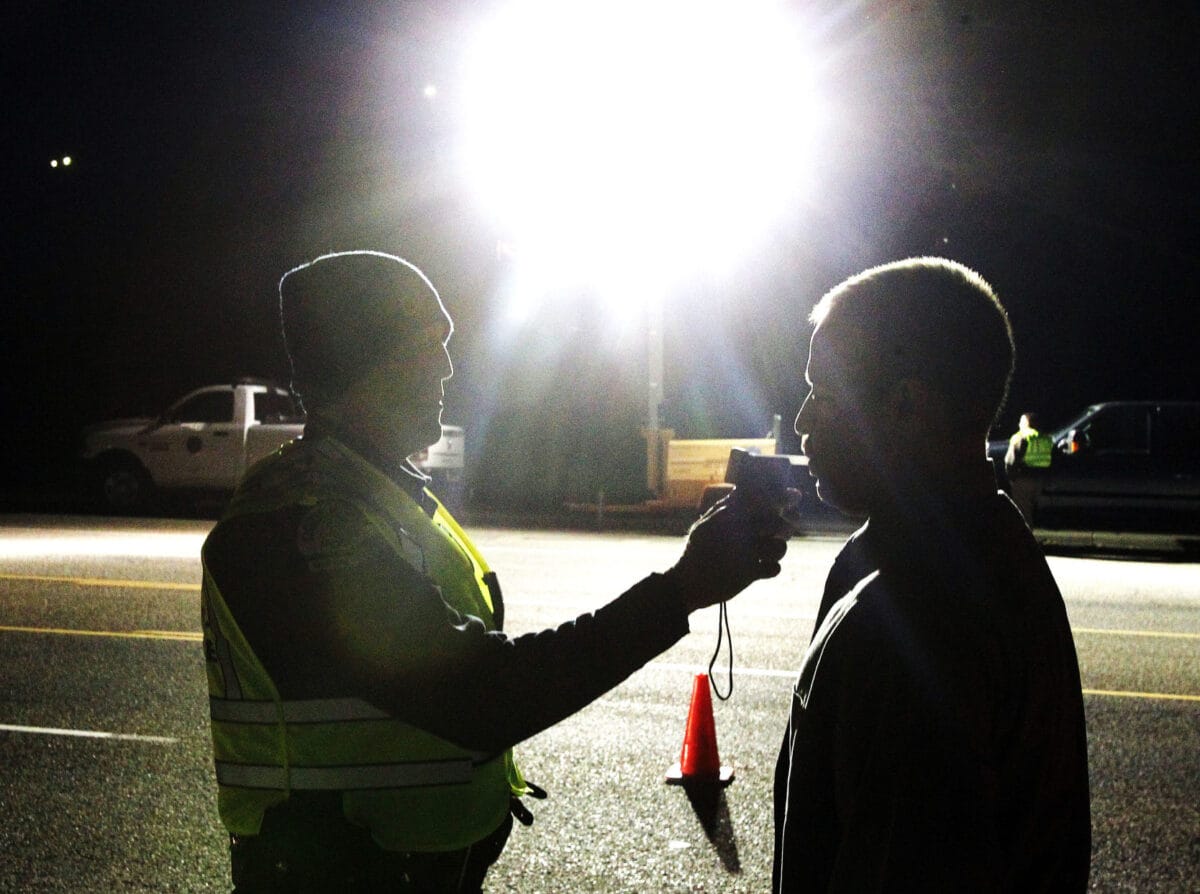Ever wonder if that speeding ticket was about safety or just a cop meeting their numbers? The idea of police ticket quotas—where officers are required to issue a certain number of citations—is a common concern, potentially fostering distrust between law enforcement and the public. This article delves into the complexities of this issue, exploring the nuances of quotas, their legality, and their impact on policing and community relations.
Decoding Police “Quotas”
Let’s address the elephant in the room: police ticket quotas. That nagging feeling you get when pulled over for a minor infraction, wondering if the officer is just trying to meet a number, is a shared experience. Officially, many police departments deny having quotas, often using terms like “performance goals,” “benchmarks,” or “expectations.” But are these just different labels for the same practice? [https://www.lolaapp.com/] Some sources suggest quotas are common, even if departments avoid the term. This ambiguity raises a critical question: are these truly performance evaluations or quotas in disguise?
The Legality of Quotas: A State-by-State Maze
The legality of ticket quotas is a complex patchwork varying across jurisdictions. Over 20 states have laws specifically banning them, likely recognizing that prioritizing numbers can incentivize unnecessary police actions. Florida, for example, has outlawed the practice altogether. However, in other states, the legality remains murky. Even within states without a blanket ban, individual cities or counties might have their own regulations. [https://www.lolaapp.com/] This legal maze makes a state-by-state analysis crucial.
Circumventing the Rules: Quotas by Another Name?
If quotas are often illegal, how do some police departments seemingly still employ them? One way is through clever wording. Instead of “quota,” they use “benchmarks,” “productivity goals,” or simply “expectations.” The pressure remains, but the language allows for plausible deniability. This semantic game has real-world consequences, impacting how officers perform their duties.
The Erosion of Trust: Numbers vs. People
When officers feel pressured to meet numerical targets, their focus may shift from public safety to generating numbers. This can erode public trust. When people feel targeted for tickets rather than legitimate safety concerns, it breeds resentment and suspicion. This fractured relationship between police and the community undermines effective policing. [https://www.lolaapp.com/]
Unequal Justice: Disproportionate Impacts
Who bears the brunt of quota-driven policing? Studies suggest marginalized communities are often disproportionately affected. When officers are under pressure to produce numbers, it can lead to biased targeting, exacerbating existing inequalities within the justice system. [https://www.lolaapp.com/] This raises serious questions about fairness and equal treatment under the law.
The Money Factor: Budgets and Tickets
The relationship between police department budgets and revenue generated from tickets warrants scrutiny. Do financial incentives influence enforcement practices, even without official quotas? This complex issue requires further investigation to understand the full picture. [https://www.lolaapp.com/]
Local Investigation: Uncovering the Truth in Your Community
Want to know about potential quota practices in your area? Start with your local city or county clerk’s office. They often hold public records related to police conduct, including local ordinances. This information empowers you to understand local policies and ask informed questions. [https://www.lolaapp.com/]
Beyond Tickets and Arrests: Rethinking Police Performance
Perhaps the most crucial question isn’t do police have quotas, but how should we measure their effectiveness? Should the focus solely be on tickets and arrests, or should we consider community engagement, de-escalation skills, and problem-solving abilities? These are complex questions experts continue to debate, vital to consider when envisioning the future of policing. [https://www.lolaapp.com/]
What Does Meeting Quota Mean?
“Meeting quota” in policing refers to achieving pre-determined targets for activities like issuing tickets or making arrests. This practice, often masked as “performance goals” or “metrics,” is controversial and frequently denied by departments. While some argue these targets motivate officers, others fear they incentivize unnecessary enforcement actions, potentially jeopardizing public safety and community relations. This section explores the complexities of meeting quota, its legality, and its broad impact on policing.
Meeting quota can manifest in various ways. Imagine a salesperson with a monthly sales target. Police quotas function similarly, but instead of products, it’s citations or arrests. This practice, though often disguised, raises concerns. Does it emphasize performance or simply prioritize numbers?
One primary concern is that quotas might encourage officers to prioritize numbers over public safety. Could the pressure to fill a quota by month’s end lead to unwarranted stops, tickets, or arrests for minor offenses that might otherwise warrant a warning? This concern is legitimate, as over 20 states have outlawed ticket quotas, recognizing the potential for abuse. However, quotas persist, often hidden beneath different names or disguised as performance reviews. The consequences of these practices, regardless of their name, can be far-reaching, straining police-community relations and potentially hindering effective investigation of serious crimes. If an officer is preoccupied with meeting a quota for minor violations, will they have the time and resources for a complex robbery investigation?
The concept of “performance goals” seems reasonable—who doesn’t want high-performing officers? However, these goals can be quotas in disguise. While departments may avoid the term “quota” due to negative connotations and legal issues, the underlying pressure often persists. Are these goals genuine performance evaluations or ways to circumvent quota bans?
The legality of quotas is a complicated landscape. While banned in many states, enforcement varies widely. Departments often find ways around these laws, using alternative terminology or cultivating a culture where unwritten expectations prevail. This creates a legal gray area ripe for abuse, hindering efforts to define and hold departments accountable for enforcing quota systems.
Quotas’ impact extends beyond individual officers and those receiving tickets. Imagine living in a neighborhood where you feel constantly targeted for minor infractions. This likely breeds resentment, not trust. This strained relationship hampers effective policing, as community members may hesitate to cooperate or report crimes. Additionally, prioritizing revenue generation through fines might divert resources from more serious public safety concerns.
Consider the human cost. Officers caught in this web face a difficult choice: meet the quota, potentially compromising ethics, or risk negative consequences. This constant pressure affects morale, decision-making, and ultimately, police-community relations. It creates a system where everyone loses.
Perhaps it’s time to rethink how we gauge police effectiveness. Should the focus be solely on quantifiable metrics like arrests and tickets? Consider incorporating factors like community engagement, successful de-escalation, and positive interactions. These alternative metrics offer a more holistic view of policing’s impact, shifting the focus from numbers to fostering positive relationships and improving public safety outcomes. Some experts believe prioritizing these qualitative measures, alongside appropriate quantitative data, may lead to more effective policing strategies and improved police-community relationships. There’s ongoing debate on the best evaluation methods, but exploring alternative metrics is a step toward a more just and effective system.
Are Police Quotas Legal in Texas?
Are Texas police officers given ticket quotas? The answer is a clear “no.” Texas law explicitly prohibits them. The Texas Transportation Code makes this unambiguous, prioritizing public safety over revenue generation. However, the reality on the ground can be more nuanced.
While explicit “TICKET QUOTA!” signs won’t be found in Texas police departments, pressure to write tickets can exist. Terms like “acceptable activity levels,” “performance metrics,” or “productivity indicators” can create an environment where officers feel compelled to produce numbers, even without explicit mandates. This pressure can originate from various sources, including departmental goals, resource allocation, or even informal peer expectations.
Despite the ban, stories and rumors about quota systems persist in Texas. These accounts, combined with occasional documented cases, suggest that a focus on numbers can sometimes overshadow justice and public safety. How can we ensure accountability and prevent the blurring of lines between legitimate law enforcement and quota-driven ticketing? This becomes even more crucial when considering public trust.
Imagine being pulled over for a minor violation. That nagging question arises: was the stop about safety or meeting a quota? Understanding your rights and the law surrounding quotas is crucial. Document everything: time, location, officer’s badge number, and the reason for the stop. If you suspect the stop wasn’t justified, consult an attorney. Don’t passively accept potential injustice; advocate for your rights.
The impact of quotas, real or perceived, extends beyond individual tickets. It affects critical aspects of policing, including public trust. When officers are seen as revenue generators rather than protectors, trust erodes, hindering communication, cooperation, and effective law enforcement. Some researchers suggest that the perception of quotas can also lead to biased policing, further damaging community relations.
While Texas law clearly prohibits ticket quotas, the complexities of law enforcement, combined with pressure to demonstrate effectiveness, can create situations where the law’s intent isn’t fully upheld. Understanding your rights, staying informed, and engaging in respectful dialogue are essential for fostering a policing system that prioritizes public safety and maintains community trust.
Do Cops Have Quotas in Ohio?
That familiar scenario: driving along, maybe slightly exceeding the speed limit, and suddenly, flashing lights. A common question arises in Ohio: “Was this about safety, or is the officer trying to meet a quota?”
The official answer is usually a resounding “no.” Police departments emphasize their focus on public safety. Yet, many Ohioans remain skeptical, suspecting that ticket writing is sometimes driven by numbers. This distrust isn’t merely anecdotal; it stems from a feeling that law enforcement sometimes prioritizes citations.
Enter Ohio House Bill 333, which aims to ban ticket and arrest quotas outright. It’s a clear statement prioritizing trust between law enforcement and the community, shifting the focus away from revenue generation.
However, nuances exist. While outright quotas might be banned, “performance expectations” remain. Even without official quotas, officers are evaluated. How is performance measured without considering numbers, at least partially? While metrics like traffic stops and citations can indicate activity levels, they also create a gray area. The pressure to demonstrate “proactive policing” can resemble a quota, both for officers and drivers. It’s a difficult balance: ensuring accountability without inadvertently encouraging unnecessary ticketing.
The Ohio quota debate transcends numbers. It’s about fairness, community relations, and police-public interaction. If the focus shifts from tickets, where should it go? Perhaps toward community engagement, proactive problem-solving, or positive interactions. These approaches could foster partnership between law enforcement and the community.
A traffic ticket is more than just a fine. For many, it’s a financial burden, forcing difficult choices. For others, it damages trust in law enforcement, fueling the perception that police interactions are about revenue, not safety. Even without actual quotas, their perception can erode police-community relations. So, while the existence of quotas lacks a simple yes/no answer, the impact of that perception is real. It raises crucial questions about evaluating police performance, building trust, and ensuring equitable policing. It connects to the mysterious world of Champy in Lake Champlain, [https://www.lolaapp.com/champ-lake-champlain] blurring the lines between law enforcement and the pursuit of the unknown, just like the hunt for [https://www.lolaapp.com/champy-lake-champlain] itself.
- Discover Long Black Pepper: Flavor & Health Benefits - April 25, 2025
- Shocking Twists: The Grownup Review: Unreliable Narration - April 25, 2025
- A Quiet Place Book vs Movie: A Deep Dive - April 25, 2025
















